Use sensory seeking activities to calm and organize sensory seeking behaviors in your “wild” child or toddler that seems to never stop moving.
Would you describe your child as wild, rough, or dangerous on a regular basis? If so, those could be signs of sensory seeking behavior.
Although there are a variety of reasons a child may consistently seem to have a lot of energy or participate in extreme behaviors, sensory seeking activities can help calm and focus kids– no matter what the cause is for kids who can’t seem to stop moving.
If sensory issues, or needs as I’d prefer to call them, are the cause, then giving your child opportunities to get the sensory input they’re seeking can even decrease their drive to keep excessively seeking out sensations.
That is pretty cool, right?
As a pediatric occupational therapist, I have some tried and true sensory seeking activities and strategies that are effective for a wide variety of kids, especially those that are “sensory seekers”.
Of course, each child is unique, and how your child responds to particular sensory strategies will be unique, too.
What is a Sensory Seeker
One of the most common ways that parents describe a sensory seeking child is: WILD.
I can’t tell you how many times I’ve walked into a families’ house for the first time to hear them say, “You’ve never seen a kid like mine, they climb the furniture, run constantly, plow through other kids, and then, you would think they’d be exhausted, but they have trouble getting to sleep.”
Of course, the truth is I HAVE seen many kids like this, and have a sensory seeker of my own at home! You aren’t alone.
Kids that are sensory seekers are often seeking out or craving more sensations. It’s as if they can’t get enough. Most commonly they love the sensations from movement, but they may seek out different sensations instead of movement or in addition to it.
Signs of Sensory Seeking Behavior
Sensory seekers are often in constant motion and may have a hard time playing with other kids because they are so rough or preoccupied with seeking sensory input. They also may have difficulty sitting down to focus whether it’s to eat dinner or do their homework.
Kids that are sensory seekers may even be unaware of dangers other kids seem to notice. They may run into the street or a parking lot without a second thought or participate in some really scary behaviors like trying to climb the refrigerator, all because they have this insatiable need for experiencing more of the sensation they seek.
Here are some more signs of sensory seeking behavior:
- Jumping, running, and crashing into other people or furniture
- Hanging upside down all the time
- Spinning around constantly
- Climbing furniture and other high points in their environment unsafely
- Licking inappropriate objects like the window, their hand, or blocks they’re playing with
- Touching everything and everyone
- Loves getting messy and will enjoy putting mud, fingerpaint, or lotion all over their body
- Smells people and miscellaneous things in their environment
- Makes or enjoys loud noises
- Stares at spinning objects or brightly colored and flashing lights.
- Crashes into people, furniture, or walls on purpose
- Wants to rough house and wrestle
- Climbs up to high points on the playground or on furniture
- Jumps from high places
- Rides bikes, scooters, ride on toys, etc., very fast
Sensory Seeking Behavior in Toddlers
The older a child is, the more obvious it is that they are a sensory seeker, but it can be tricky to figure out with toddlers because all toddlers are always on the go.
But, sensory seeking behaviors in 2 or 3 year olds often have an edge to them. Sensory seeking toddlers often do things that are surprising like opening the drawers of the dresser, climbing to the top, and leaping off.
Or, they are very fast or focus on spinning a lot.
Typically toddlers may spin or ride their little car fast occasionally, but a sensory seeker will do this often and with an intensity that other kids their age don’t.
While it may feel overwhelming to realize your 2 year old is a sensory seeker, the strategies and sensory seeking activities you’ll learn further in this article are perfect for this age too!
And, toddlers often respond to and start creating new pathways in their brain that help them be more calm compared to older children.
Why Is Your Child a Sensory Seeker?
Why are some kids big sensory seekers? It’s all related to their sensory processing, that’s the function of the brain that’s responsible for registering, sorting, and interpreting the multitude of sensations it receives.
However, some kids have trouble focusing or sitting still for other reasons such as ADHD, food sensitivities, or other neurological difficulties. Although, ADHD and sensory issues like sensory seeking are closely linked.
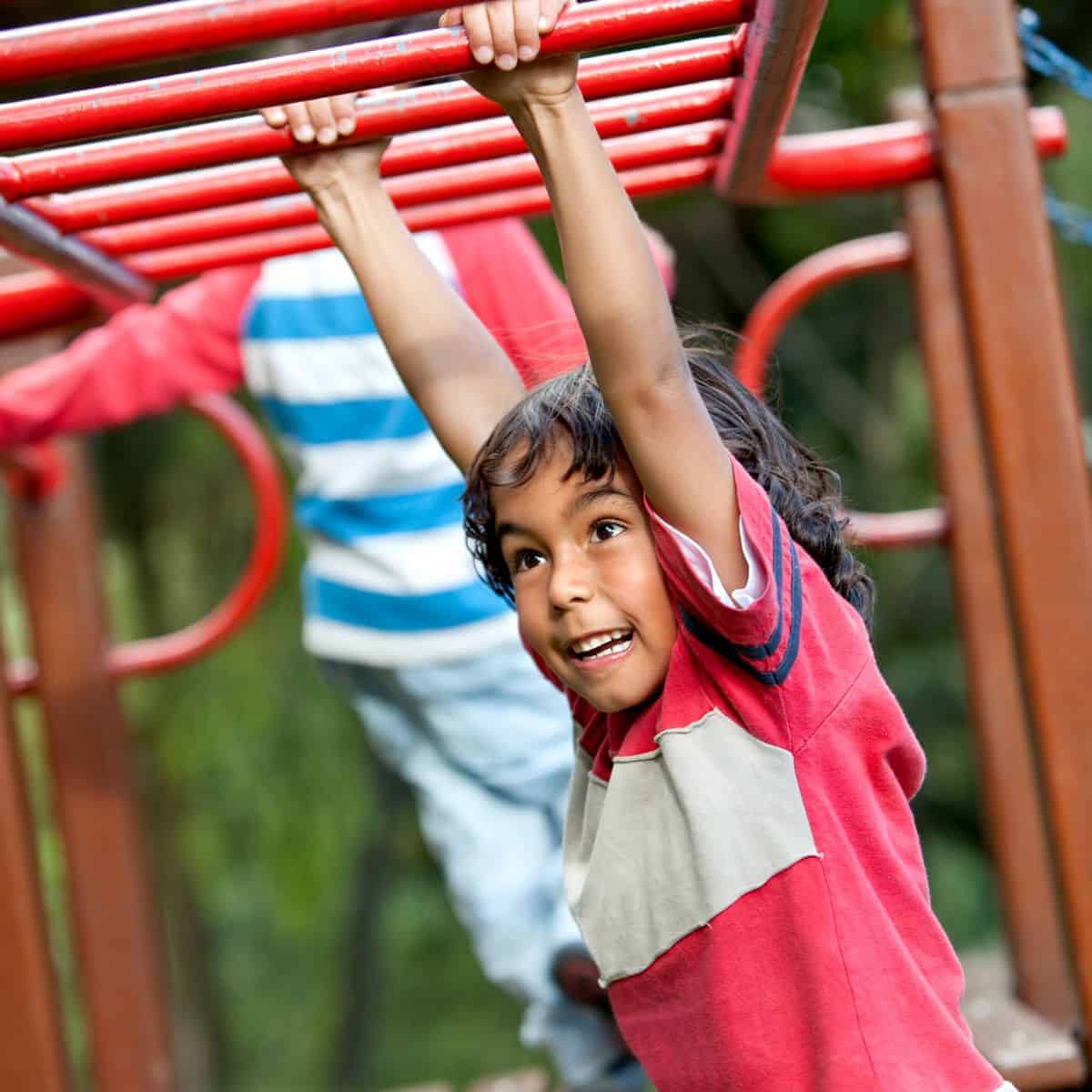
Sensory seeking is often closely linked to the sense of proprioception, or body awareness, and the vestibular sense, or movement. These senses allow our body to move through the environment effectively and stay balanced.
Sensory seeking kids are often not processing the sensations they receive to stimulate those sensory systems throughout the day well, as a result, they seek it out more. Meaning, they want activities that give them lots of proprioceptive and/or vestibular input.
Running, spinning, squeezing, climbing, and crashing into things all give LOTS of this type of input, and that’s why sensory seekers so often engage in these behaviors.
Of course, kids can also seek sensations from their vision, hearing, tasting, and smelling senses too.
In which case you will see sensory seekers staring at spinning objects or flapping their hand in front of their face for vision. Or, making lots of noise for their hearing sense.
Taste seekers will like big bold flavors and may lick a lot of objects in their environment. Smell seekers will smell everything all the time.
Does My Sensory Seeker Have Sensory Processing Disorder?
Each child has sensory preferences, preferring and disliking some sensations. That is typical development, and something they will continue to experience into adulthood.
When a child has sensory processing difficulties that affect their daily life, which is the case for some sensory seekers, they may qualify for a Sensory Processing Disorder (SPD) diagnosis.
Some sensory seekers are able to contain themselves and stop seeking in social settings or at school. In this way they may not qualify for SPD.
But, when sensory seekers do receive an SPD diagnosis is when the sensory seeking behavior causes them to struggle to learn, socialize, or pay attention.
It’s common for kids with Autism, ADHD, and anxiety to also have SPD or sensory needs. Although many kids have some sensory processing issues though and don’t have any other diagnosis.
How to Help Kids with Sensory Seeking Behavior
The good news is that you can help your child with their sensory seeking behavior and improve their attention, focus, and ability to calm down with opportunities to participate in sensory seeking activities.
For kids seeking sensory input, they tend to need a chance to move their bodies. A targeted sensory activity can then be a productive or safe outlet at challenging times of the day, whether that’s mealtime, homework, or bedtime, or during transitions for example.
Setting up sensory activities somewhat routinely (otherwise known as a sensory diet), may be helpful. Other sensory seekers may not want or benefit from a set schedule. What’s important is that you offer sensory activities when they need them, and watch to make sure those activities have helped them.
Affiliate links used below. See our full disclosure.
Powerful Sensory Seeking Activities
Most parents of sensory seekers are overwhelmed by and feel that constant movement interferes the most with their concentration, learning, and socialization.
Focusing on activities that provide vestibular and proprioceptive input will likely be the most helpful for these kids.
Proprioceptive activities involve anything with pressure to the muscles and joints, so actions like squeezing, hanging, climbing, and jumping give input to this sense.
Vestibular activities involve anything with movement, and kids tend to seek that out by spinning, swinging, or climbing something high.
Here are powerful sensory seeking activities:
#1. Sensory Seeking Activity: Jumping
Any jumping activity is great for sensory seekers because it is loaded with tons of proprioceptive and vestibular input. You can let your child jump on the couch, bed, or a trampoline, which is one of my favorite sensory toys.
It’s almost always my first recommendation for kids that are super active, rough, or climbing the walls.
This is my sensory seeker jumping on a small indoor trampoline with a handle. He initiates using it a lot on his own, which is ideal. If he seems antsy before bed or meals, I’ll have him jump on it for a few minutes beforehand.
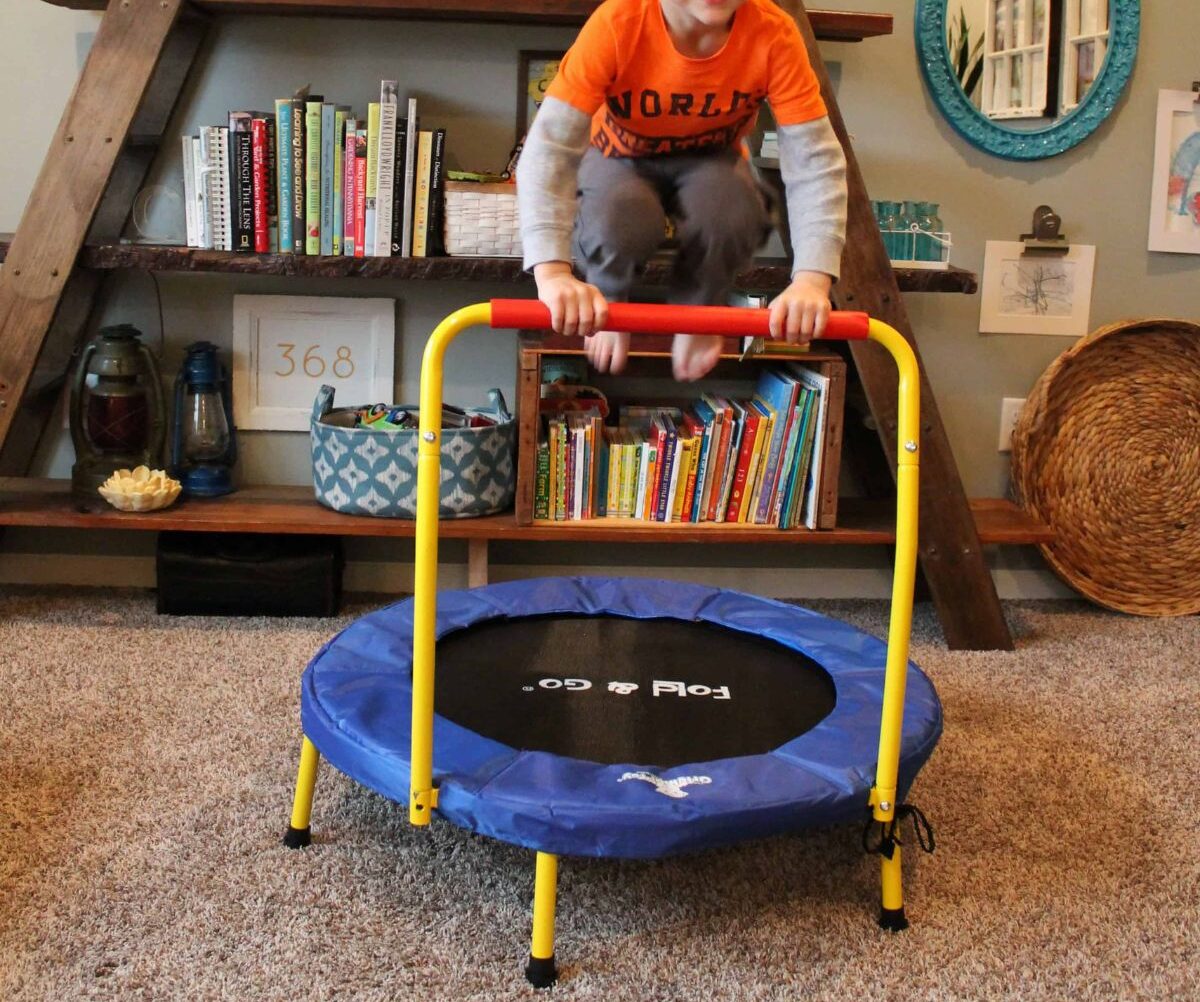
#2. Sensory Seeking Activity: Climbing
Climbing also stimulates proprioception and vestibular input! Using jungle gyms, monkey bars, and stairs in the home are great activities. I also love the fabric tunnel, which requires some adult help (or another child) to hold one end of the tunnel open.
There’s a DIY version here, or you can purchase one ready to go here. A lot of deep pressure is also happening with the tunnel, which is very calming.
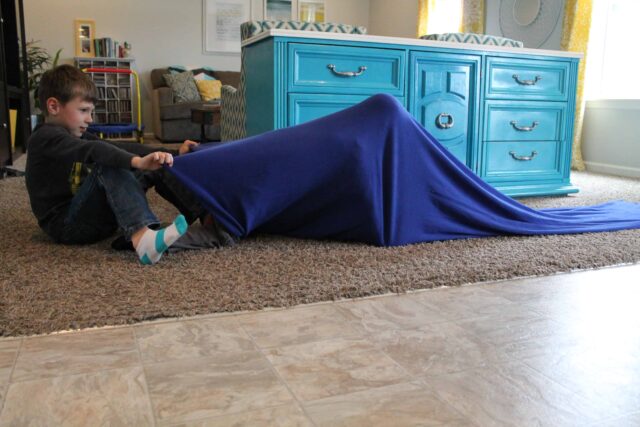
#3. Sensory Seeking Activity: Vibrating toys
Vibration gives a lot of proprioceptive input and some vestibular too, believe it or not.
Not all kids like vibration, so you might want to try a small bug like this first (as a therapist, I’d always keep one in my bag), or if you know your kid responds well to vibration, using this vibrating seat is perfect for meals, homework, story time, etc.
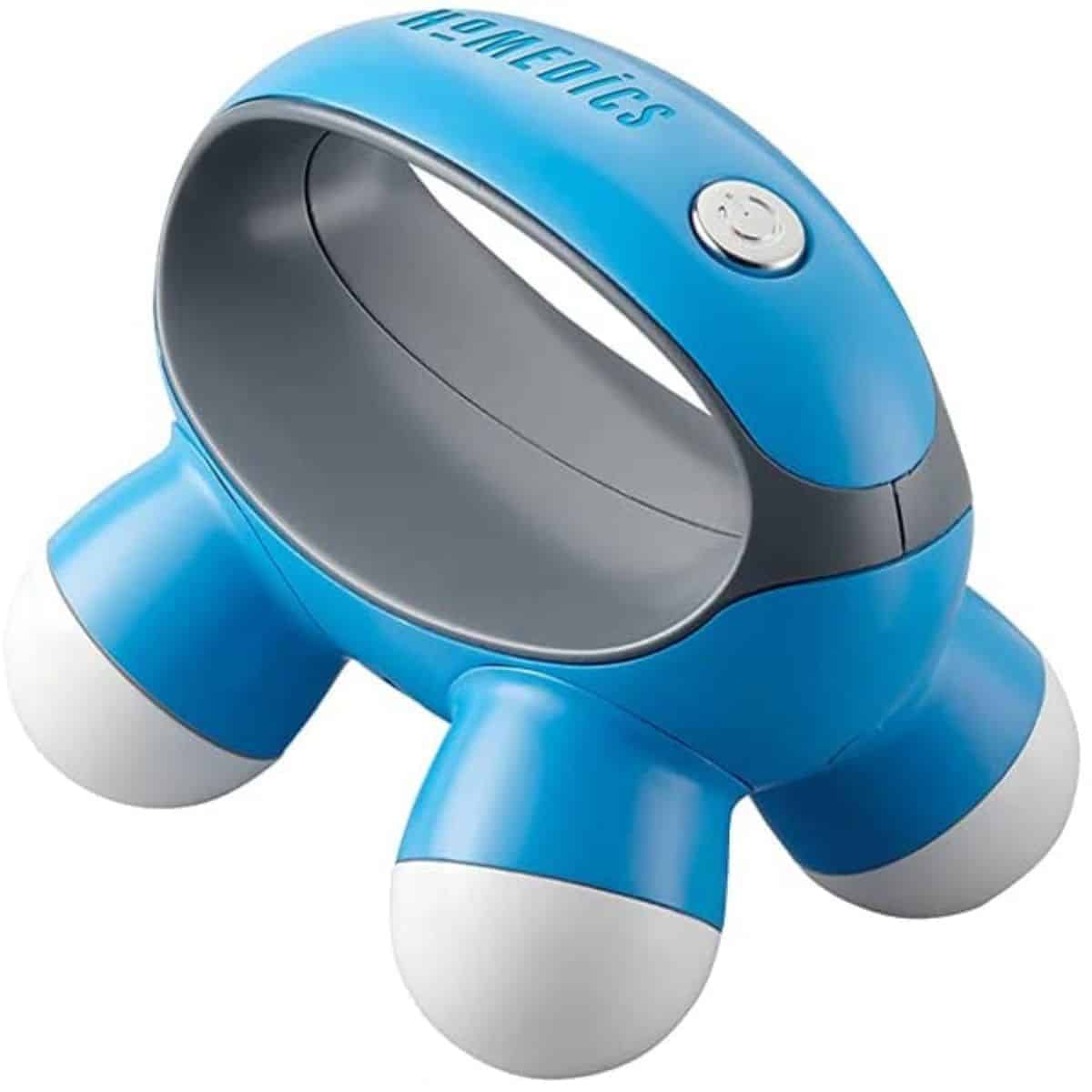
#4. Sensory Seeking Activity: Pressure
Squeezing into tight spaces like a designated cool down spot or behind the couch can achieve this, as well as big bear hugs.
A body sock is a another simple tool you can use to help your child get pressure as they climb into a stretch sack and stretch out their arms and legs against the tight fabric. See my pics for the best body sock, and how to use them.
There will be times when a really active child won’t want to sit still for this, they may need to jump on the trampoline first or crawl through a tunnel a few times.
If I were using the body sock, I would read bedtime stories in it or even put homework on a clipboard and let them complete in there.
Joint compressions don’t require any tools and are a quick way to give your child pressure too. Make sure you head to our joint compressions tutorial for a video demonstration, if you aren’t familiar with how to use them.
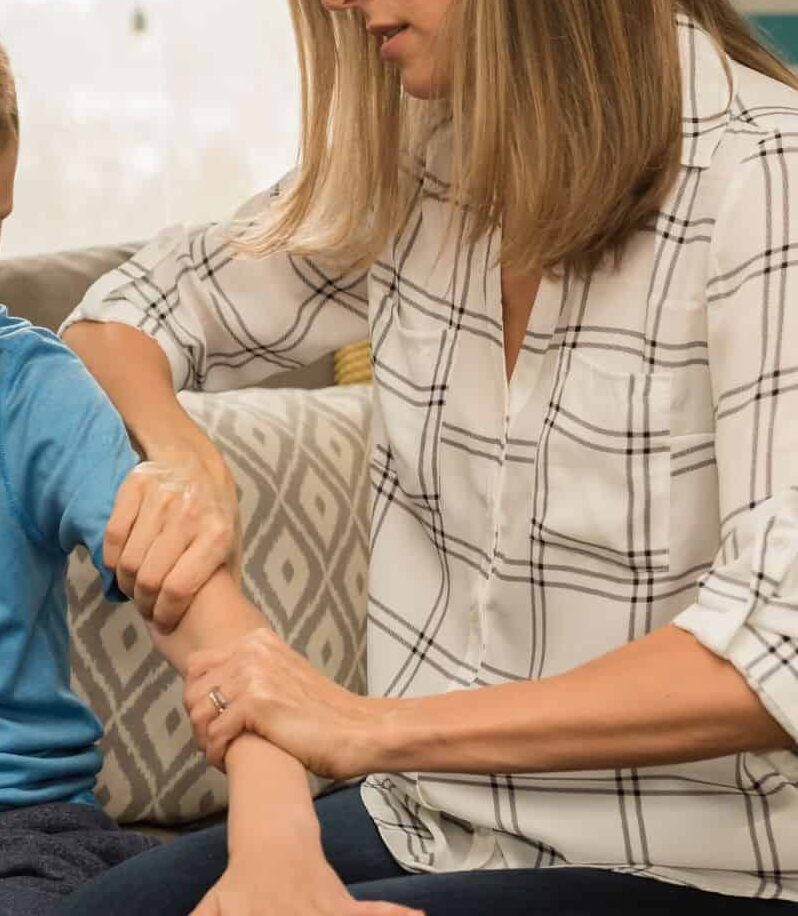
#5. Sensory Seeking Activity: Get Messy in a Sensory Bin
If your child loves to touch everything, you can stimulate their tactile sense by giving them a large bin of a texture to play in.
This could be in an empty bath tub, a baby pool, or an empty plastic container. Tactile sensory seekers often love shaving cream, slime, or dry rice. Get inspired with dozens of more sensory bin ideas.
You can also think outside of the sensory bin and focus on messy play in general. Some messy play ideas for seekers are making mud pies in the back yard, finger painting, or sculpting with kid friendly clay. Get more messy play ideas.
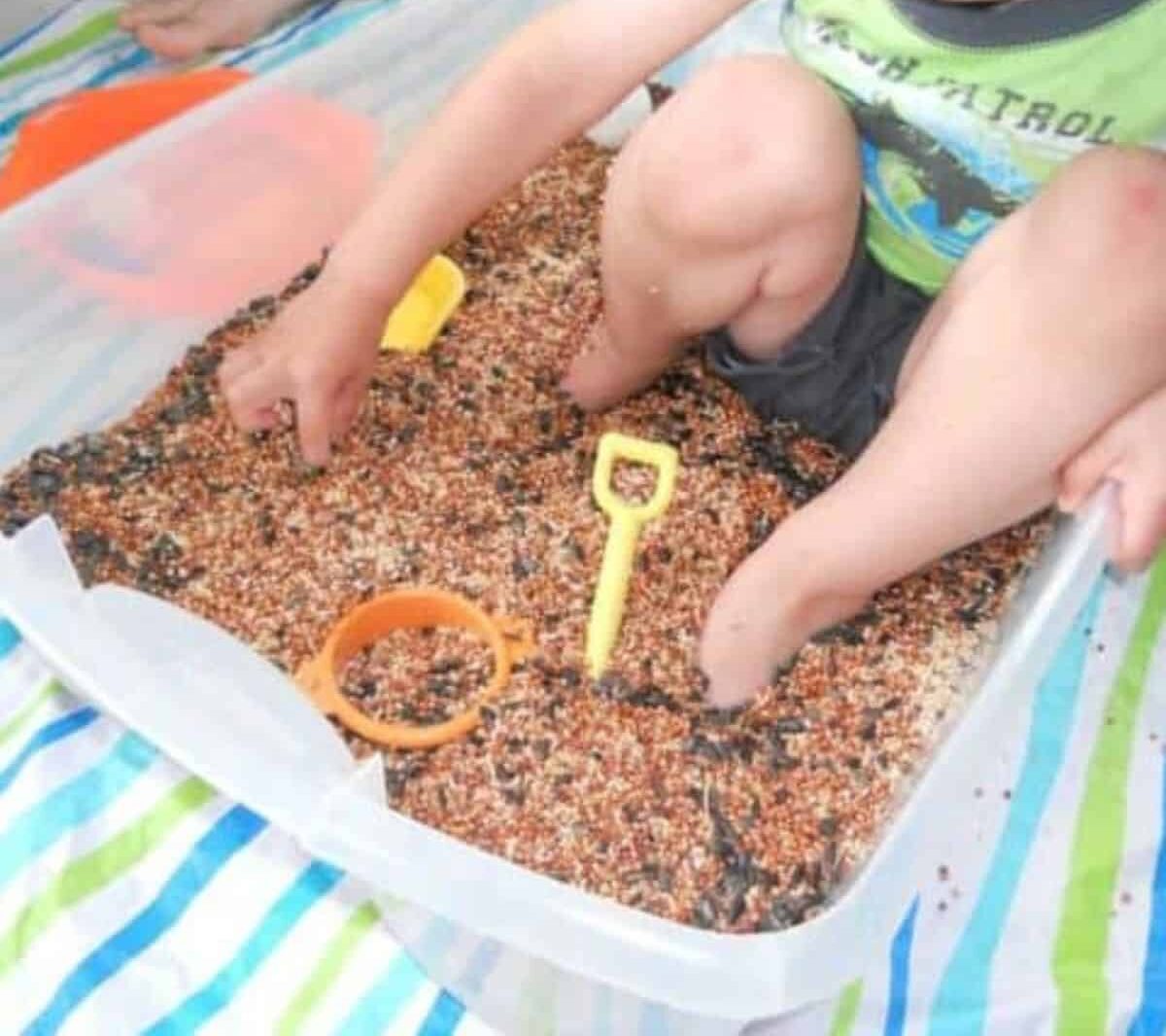
#6. Sensory Seeking Activity: Bouncing
An exercise ball is an inexpensive and indispensable sensory toy for sensory seekers. They can roll on it over their bellies, they can bounce up and down, and you can roll them on top and bounce them on top with their feet totally off the ground – they often LOVE THIS.
If you want to diversify your bouncing, you can also check out a peanut shaped ball that makes it easy for kids of any age, but especially toddlers and preschoolers to sit on it while they sit at a table or in circle time.
Learn more about 7 sensory activities with an exercise ball.
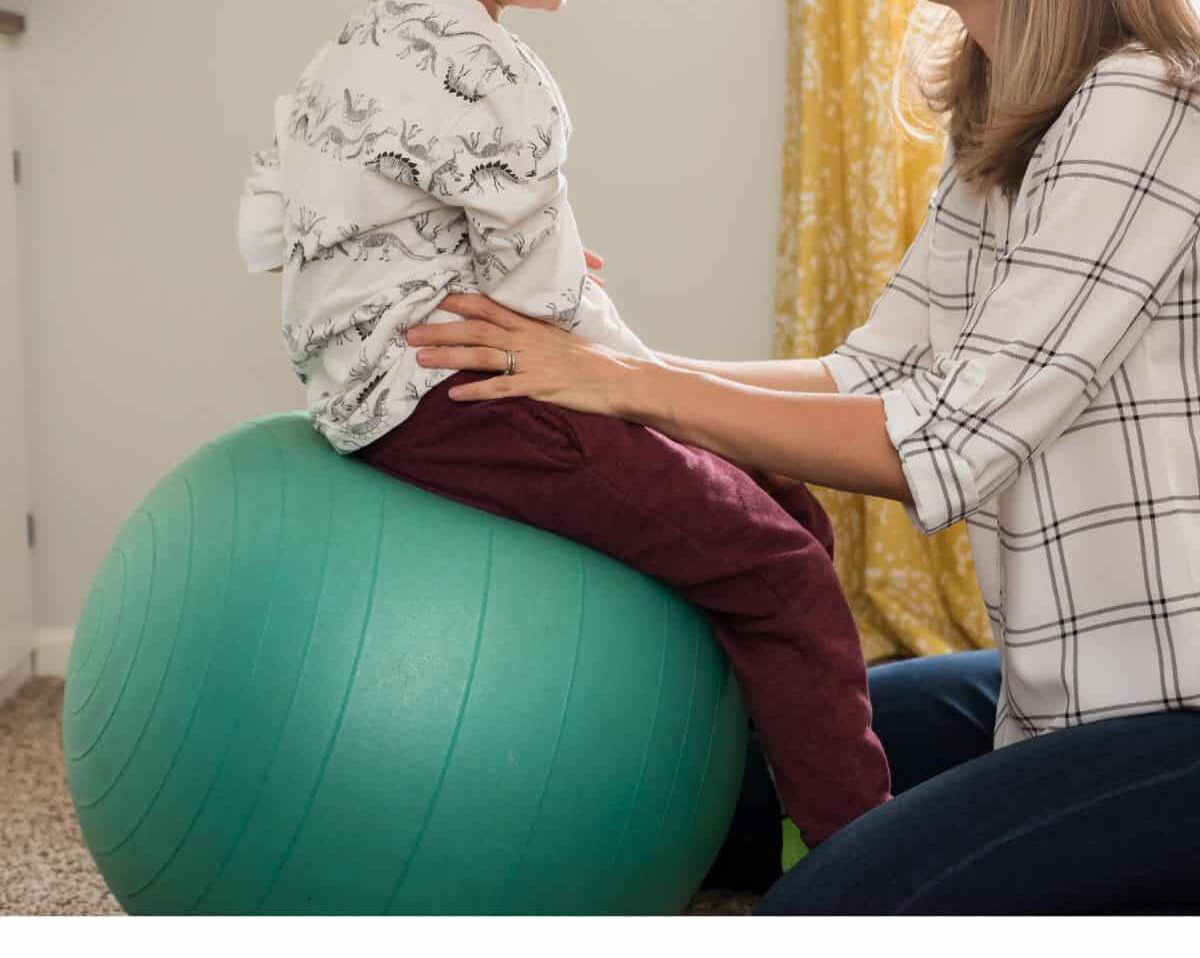
#7. Sensory Seeking Activity: Scooter Board
Scooter boards are a simple toy and easy to store away, but they give powerful sensory input when a child rides one, especially on their belly! It’s often used in occupational therapy, but works great at home too.
On a hard floor surface, encourage them to push themselves around using the palms of their hands or while you pull them back and forth with a rope.
Anytime you give your child sensory input, always make sure you’re watching their reaction and stop anytime they seem uncomfortable or have had enough.
Check out 5 Ways to Use a Scooter Board for Sensory Input
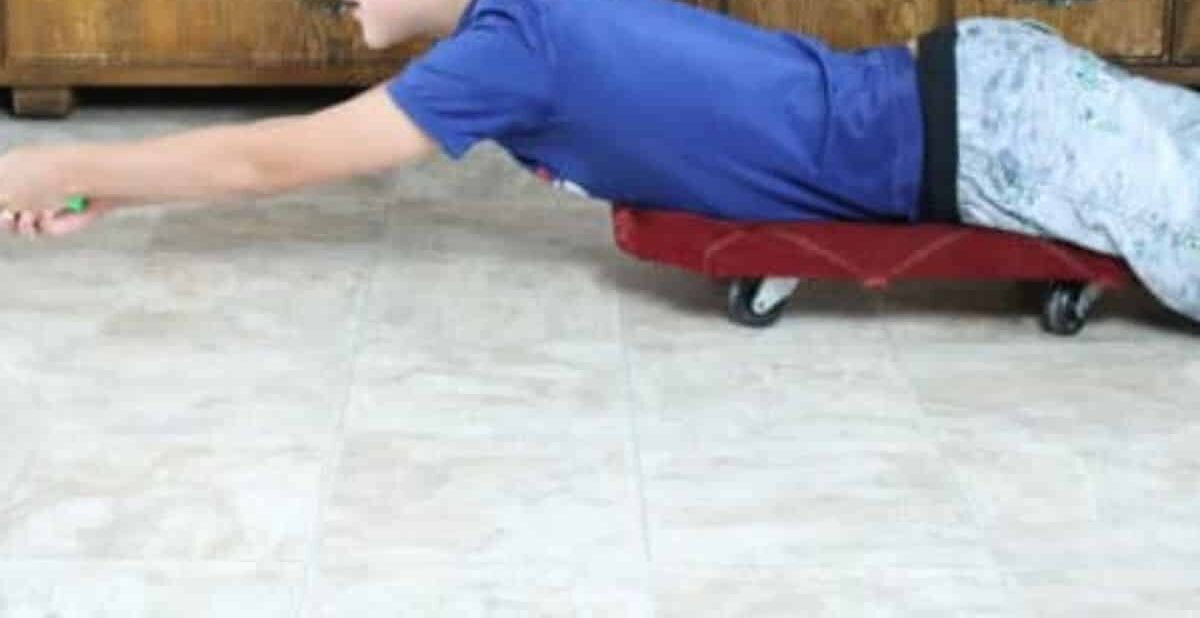
#8. Sensory Seeking Activity: Obstacle Course
Want to keep your sensory seeker occupied while their sensory system is getting what they need, combine all of these sensory seeking activities above into one. Here’s one example, but there are countless options:
- Jump on the trampoline
- Grab some bean bags and put them on the scooter board as they follow the path you’ve indicated to…
- Bounce on the yoga ball 10 times
- Look for 3 hidden objects in a sensory bin full of dry rice
- Crawl through a tunnel
- Use a vibrating toy on their arms and legs
- Start over
You’d arrange these items in a loop or some sort of circuit and show your child how to go through it! We have more ideas for obstacle courses to try.
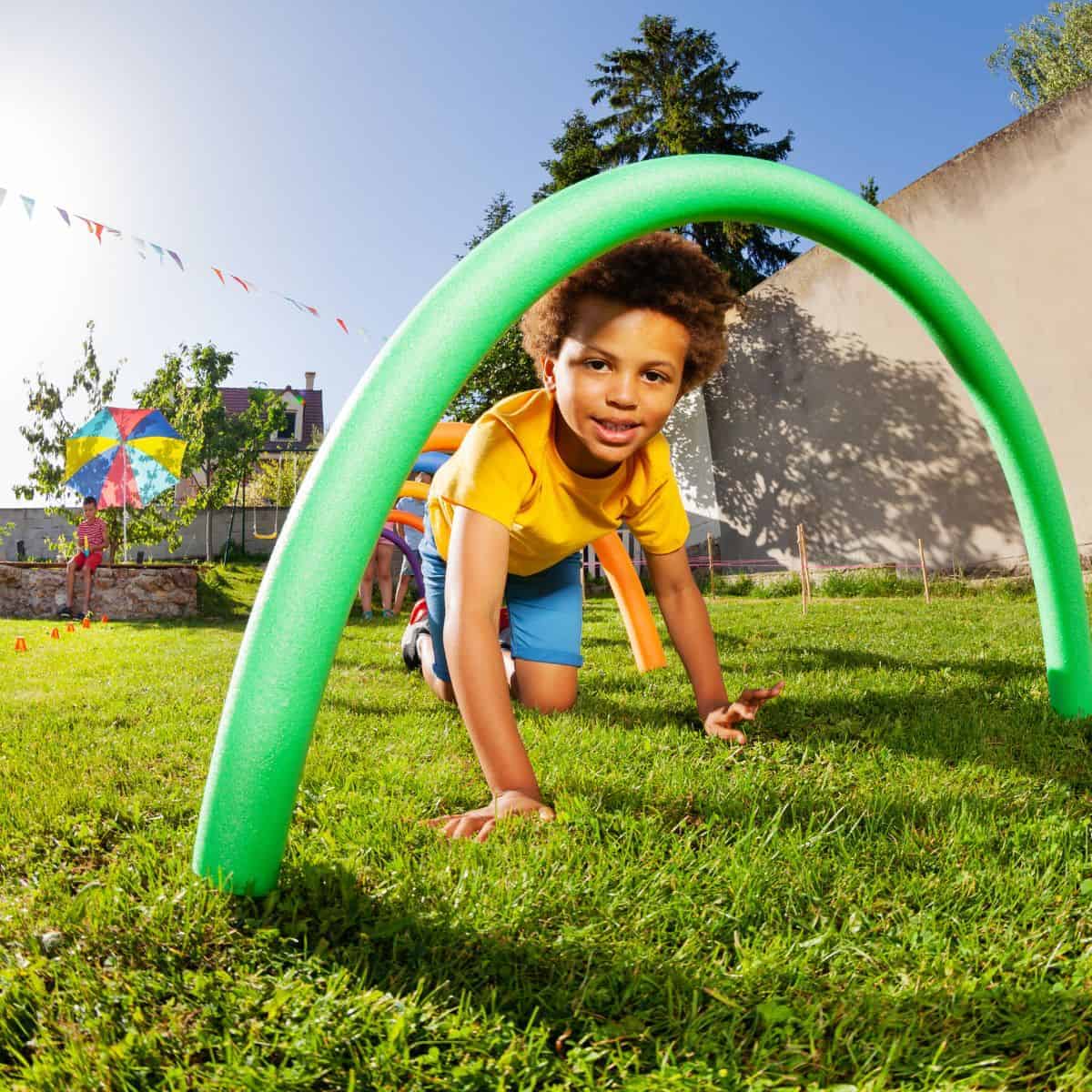
These sensory activities are do-able right? Try implementing some of these sensory seeking activities and see how your wild child responds to them, truly it can make all the difference for you and them!
Learn More in the Free Sensory Activities Workshop
If you’re feeling overwhelmed or want to learn how to use sensory activities for a variety of sensory needs then grab a seat in our free workshop 3 Expert Secrets to Calm and Focus Your Child with Specialized Sensory Activities.
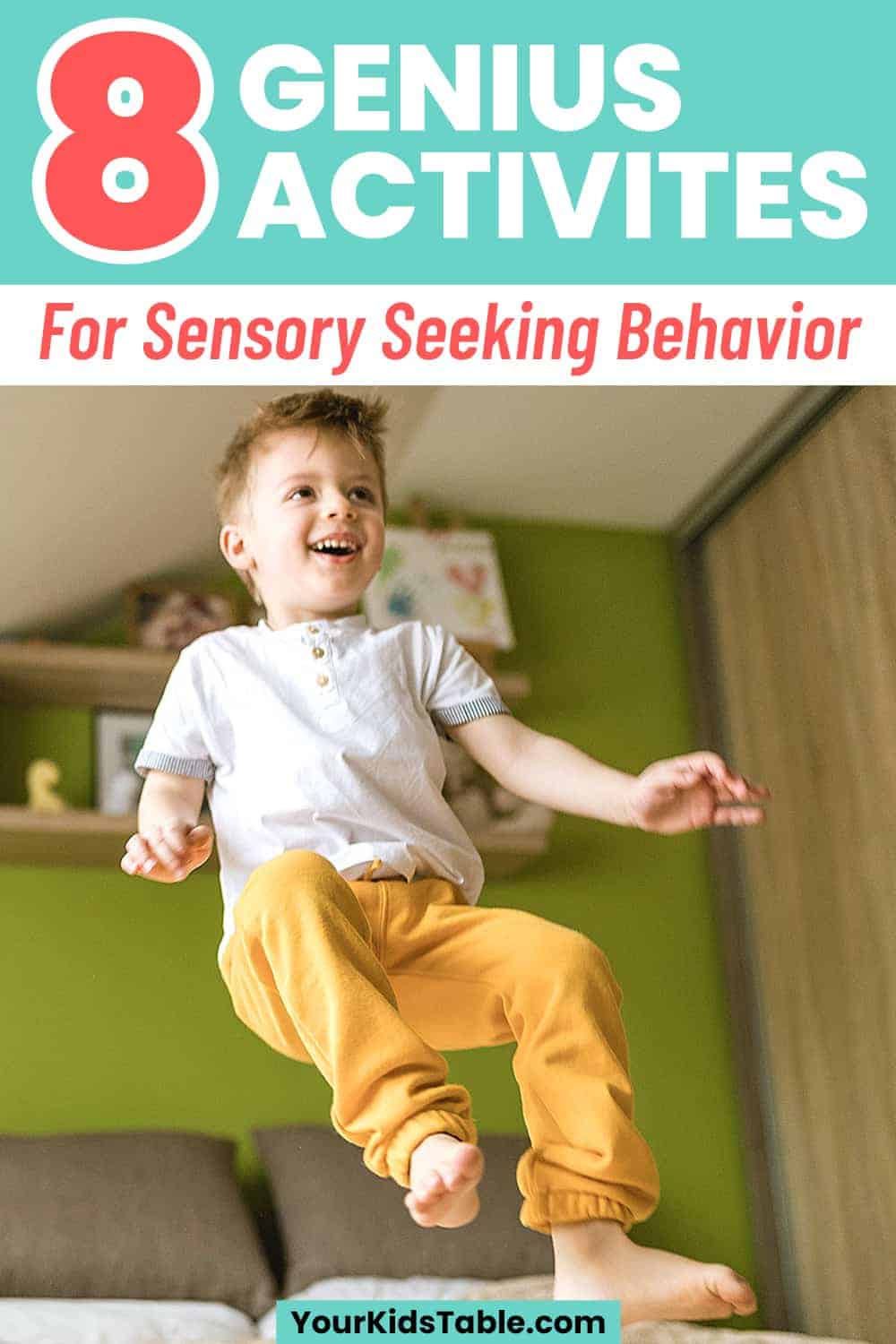
More About Sensory Activities
Incredible Heavy Work Activities to Regulate Kids
100+ Awesome and Easy Sensory Diet Activities
Everything About Oral Sensory Processing
21 Sensory Activities for Toddlers that Improve Development!
Alisha Grogan is a licensed occupational therapist and founder of Your Kid’s Table. She has over 20 years experience with expertise in sensory processing and feeding development in babies, toddlers, and children. Alisha also has 3 boys of her own at home. Learn more about her here.
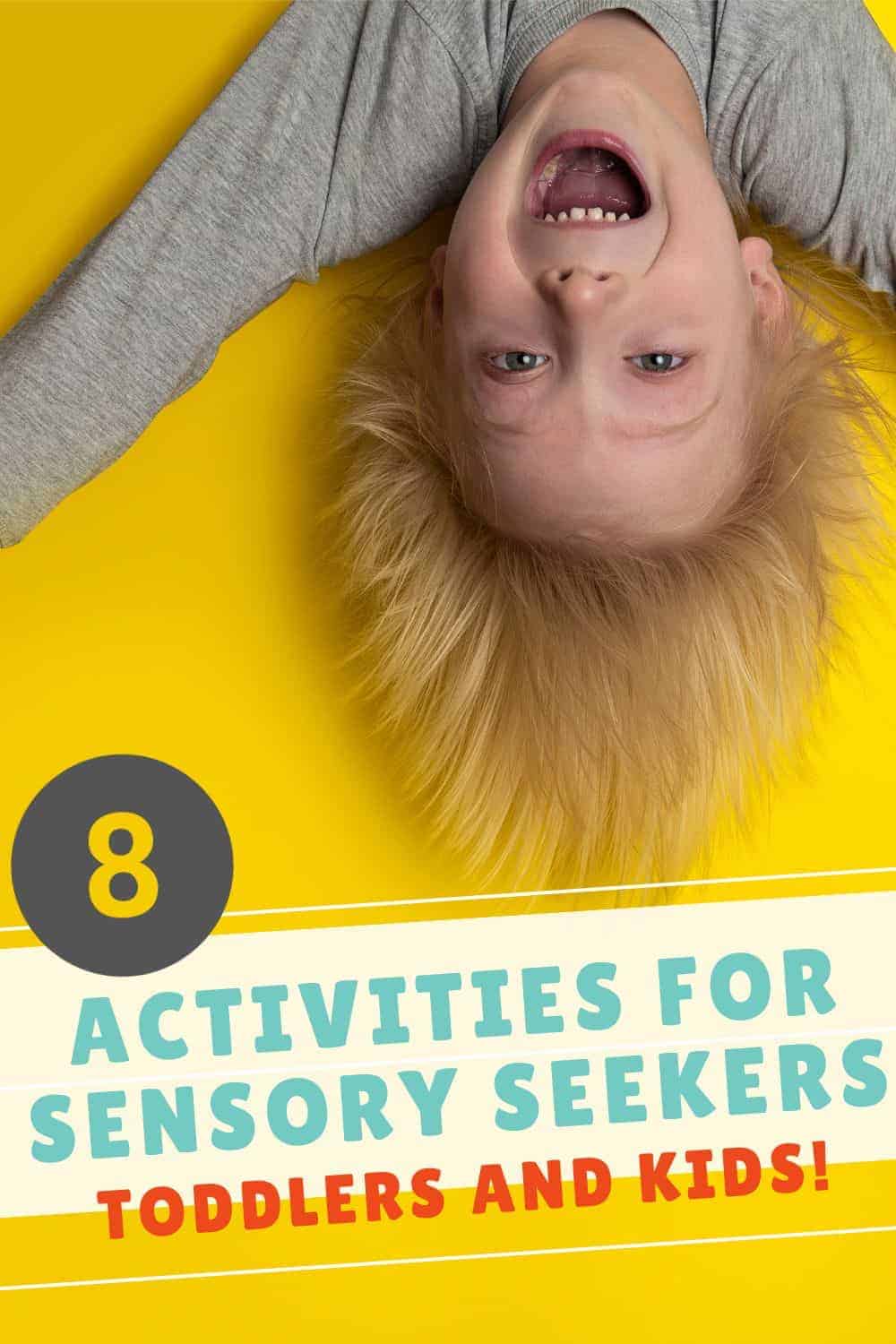
I am an Early Childhood Special Educator, at a public school, for 4-5 year olds. I wish I had more solutions for my student who loves climbing and turning upside down. She can barely sit in a chair to eat because her body is so busy. I wonder what I could offer her inside the classroom to satisfy those sensory needs. We cannot hang anything from the ceiling. We cannot go to the playground with monkey bars because she elopes.
Hi Cameron! Would a weighted lap pad, vibrating hand held massager, or band stretched across the bottom of the chair as a foot fidget work? We also have a couple posts on classroom sensory ideas that may inspire you with something she would benefit from. Let me know if you want to troubleshoot any other ideas! Classroom ideas,
Best,
Laura
Your Kid’s Table OT
I have just read through a number of your posts and forwarded some snippets of this one to my husband, resulting in us both having a lightbulb moment that maybe this is our almost 2 year old!
She is very physical, loves to play rough, constantly wants to run and spin at any opportunity, and adores messy play of any kind. Her climbing has been noted at Nursery in the last few weeks, as well as starting to push her peers a little, but seemingly not out of anger.
Is there any specific strategies for little ones that are not quite 2 yet?
I would love to go to the free workshop but there is absolutely no information regarding where it is located. They should update that. Hopefully it is in Southern California. It would be great if they could post the location of where it is being held. It says to “Save a seat” at the workshop, so I am assuming it is not an online workshop.
Hey John,
We do have a few free workshops, but everything is Online! You do still need to save a seat for the workshop as there are only so many people in a session. Let us know if you have any other questions!
Best,
Desiree
Thank you, so much for “showing” how much my sesory-seeking level 2 ASD (with likely SPD, based on what I’ve been seeing) son NEEDS a trampoline. I’ve known, but not how badly he needs it and will be pushing harder for it.
Hey Veronica,
So glad that this article was helpful for you!! If you haven’t checked out our free sensory workshop you may find some more great information for you! You can Save Your Seat Here. Let us know if you have any questions!
Best,
Desiree
Hi! Thank you so much for all the information! Some really great ideas for us to try at home. My little guy is 2 and is definitely displaying some of these signs. His preschool has had a rough time with him so far, as he’s rough and loud and wants to run and jump and scream and play ALL THE TIME. It’s specifically an issue during nap time – he won’t lie down. Any recommendations for things his teacher could do with him during lunch or during nap time to help cool him down?
Thanks!
Hey Heather!
So glad you enjoyed our article and found some great ideas! As far as what the teacher can do, here is a different article on 80 Proprioceptive Activities I’d take a look at this and try some of the simple ones at home to see his response and find ones that seem more calming for him, then provide those suggestions to the teacher! Hope this helps, keep us posted!
Best,
Desiree
I definitely have a proprioceptive ‘wild child’!
My other children have the usual crazy toddler and 4yr old energy that sometimes overtakes them but when they stop my SPD child can’t.
How do I manage to calm him and the others without it all ending in tears?
Space is also limited inside the house so I try to avoid allowing them to run inside but sometimes its not possible for them to be outside. 🤪
Hey Kerry,
Great question, we understand that using sensory activities can overly excite children too, so you do need to be careful. I would take note to try to find activities that are more calming for your SPD child and end with those. If proprioceptive is overly calming you can try rhythmical activities with singing songs (so there is an end point). I think you’d love our free workshop on sensory processing as you learn a lot more you can Save Your Seat Here.
Best,
Desiree
I have a quick question about this. My 2 year old daughter meets a lot of these (running, crashing, jumping, won’t sleep, rough, biting when excited, holds pencil with a death grip) My question is this: When she sits to color or play play doh, she tenses her entire body, knees bent and feet flexed, abs tight, arms flexed. She is so flexed that she is sweating and kind of rocking. She is definitely not autistic or SPD. Do I let her continue sitting like this because she needs the stimulation or do I give her a healthier alternative? thanks
It sounds like you are doing a great job observing what your child is needing with regards to sensory input! If you find that this behavior is hurting her, I’d reach out to your doctor, but also try to look for an alternative to help her during these activities. We also have a free workshop that may be helpful for you in identifying sensory differences and activities!!
Save your seat here: yourkidstable.com/workshop
Have you tried a wiggle seat? Worked wonders for our son!! There’s a squishy balloon thing that goes on a chair or there are even stools with a rounded bottom so their whole lower body can move. Works so good for our son, we even use it at school. Alternatively you can get a small bungee cord & cut a pool noodle and put on the front &/or back legs of chairs!
Hello, I need some help . My son climbs on me through the night for comfort and likes to play with my bracelet in his sleep, he also doesn’t sit still when home learning he wiggles a lot but doesn’t fidget?
Hey Michelle,
So glad you reached out! I’d look at starting him on a sensory diet so that he is getting appropriate sensory input that he needs prior to seeking it out! You can read about sensory diets HERE. Also, we do have a free workshop to help understand sensory needs and working through them. You can save your seat here: yourkidstable.com/workshop
Best,
Desiree
Hi there,
Our little guy is showing strong symptoms of hyposensitivity- very rough and tumble. Always has his legs moving, always yelling rather than talking, jumping around the couches and off very high things- loves spinning and doing very dangerous things. We are just lucky he is extremely coordinated.
Anyway I have two questions- what sort of symptoms of hyposensitivity would you see in an adult? I cannot seem to find any info.
and to be diagnosed with hyposensitivity do all of the symptoms need to show as my boy does not have each one. But show very obvious signs to others.
Cheers
You definitely do not need to have every single symptom. As for adults, they are usually very active and adventure seekers. However, there isn’t always a genetic component if that’s were you were looking in to. I hope that helps. Did you see the sensory diet workshop? I think that would be helpful for you if your looking for resources.
Hi Alisha I thought this site is brilliant we have a very active 7 year old boy very cuddly though we just going down the sensory route we was very stunned how much extra are boy needs we have been to therapy sessions and I done research on sensory and I do like the fact we are not the only ones with a wild child I found this post very useful indeed
It can all be very overwhelming, glad you found you’re way here!
Interesting article. I have a sensory seeker, always pushing shoving, running, grabbing , squeezing, climbing etc etc! I have read many times that jumping is good for sensory seekers, and he absolutely loves to jump on beds or a trampoline; however I have been reluctant to buy him one as I have found in the past that it seems over stimulating and sends him even more crazy and his behaviour can become out of control. An OT suggested that he may just need to jump it out and come through “the other side” but I am very wary as his behaviour can be very unmanageable as it is and I don’t want to buy a trampoline only to have to take it down. or ban him from it. We have tried a small exercise “trampette” like the one in your pictures but he doesn’t like it as it is too resistant. Any thoughts? Thanks
These are really good thoughts Frances and I know exactly what you’re talking about. First, I’d check out my post on proprioception- you’ll find a lot more in there that will be helpful. Second, I’d really focus on doing the jumping with him and counting or singing a nursery rhyme to keep it structured and then move to a calming activity following like wrapping up tightly in a blanket or playing with a toy that vibrates- both are calming, and he may not “like” those, just some ideas. If your unsure of the trampoline then I’d use the couch or bed and see if you can get him more regulated before investing in the trampoline. I do love the trampoline and maybe you could put up some ground rules about how he uses it if you get one? Just an idea. Hope that helps!
Hi Alisha…. Help…. What do you suggest?
In regard to the “Wild Child”… that is my grandson “B”! “B” is 3 1/2 years old. “B” has been diagnosed with some sensory issues (but not SPD because he only has a few sensory issues. No ADHAD or Autisim). Without going into all the details I will get straight to my question…. How do you suggest getting the wild child” to STOP???
“B” has just begun running back and forth in the house, humming. I suggested my daughter try the mini trampoline (which they do have). He is using it…. But, now he is still running, and running to the tramp and jumping, and back to running. It is continual…. He will not stop!!!
FYI… he is in OT, they have a weighted blanket, they use a chew tube, they are very careful with his diet, use/try oils & natural remedies…… The only thing that seems to calm him is letting him have the iPad – which they try very hard to limit (it is currently put away)!
Any Suggestions???
God Bless & Thank you 🙂
Oh Nana Becky, I hear you! I can totally envision the whole scene. The best thing to do is really to give him to the time and space to get that need met, but if it seems to never end you may need to set a timer or end the running. Saying something like, “10 more minutes of running and then we’ll jump on the trampoline or play row row row your boat (while tugging on arms.)” I would definitely ask the OT for specific suggestions, she should have some great ideas from working directly with him! See this page too, and sign up for this free course, which will be really helpful!: http://www.yourkidstable.com/free-mini-course
The last 2 years we have fell down the Sensory Processing (and ADHD) rabbit hole with my now 8 year old. She met all her markers and wasn’t quite “wild”, but Grampa correctly nick named her Live Wire! We LOVE our OT and behavioral counselors who get the sensory needs this sweetheart needs to function, and help me and dad see the forest through the trees when the melt downs are coming too fast!
As my husband and I read sensory books we admit to one another “I always avoided that!” ” I like that taste but hate the feel” or “My mom knew I preferred silky over fuzzy and bought sheets/coats/toys accordingly; I just thought she loved me, not that my senses couldn’t stand fuzzy!”
SPD in our middle girl has totally opened our eyes to ourselves, and help us manage our other 2 better because we assess the sensory environment/personal needs before disciplining “wild” or disruptive behaviors.
Great site with great info on all things developmental! Thanks!
Oh Janett, I can’t tell you how much I love reading comments like these!!! Thank you for sharing, you shared so many little nuggets of wisdom in there, it is wonderful! It is so true that so many parents have sensory differences and so many adults feel misunderstood and/or still need to give their own sensory systems attention. Made my day with this comment, thank you:)
Oh how i wish this was made available and studied earlier for my brothers sake. He is 30 now and most of the options then were medications that have had long term affects, hospitalizations, and much counseling. This is a wonderful resesource and it provides a sense of hope for our future generations!
Thank you so much Joy for you lovely comment:)
What a great resource!! I really enjoy your site. While I am not an OT myself (I am a trained Speech Language Pathologist assistant) I work with and see a variety of children with sensory needs. I also have a 2 year old son. There are no concerns for him at all with meeting appropriate developmental milestones, however these are some great strategies to incorporate as a way for him to really expend some energy! He’s a typical energetic and active boy 🙂 Thanks again!
Hi Elle! Thank you so much for that comment, I really value your opinion! I’m glad you found some strategies for your little guy!